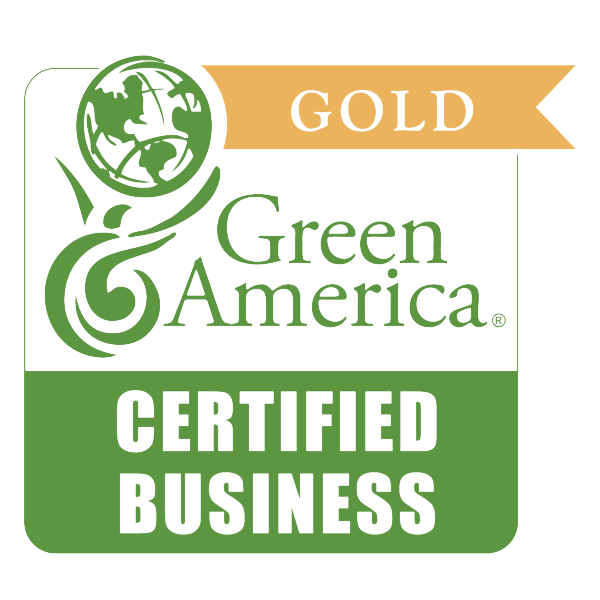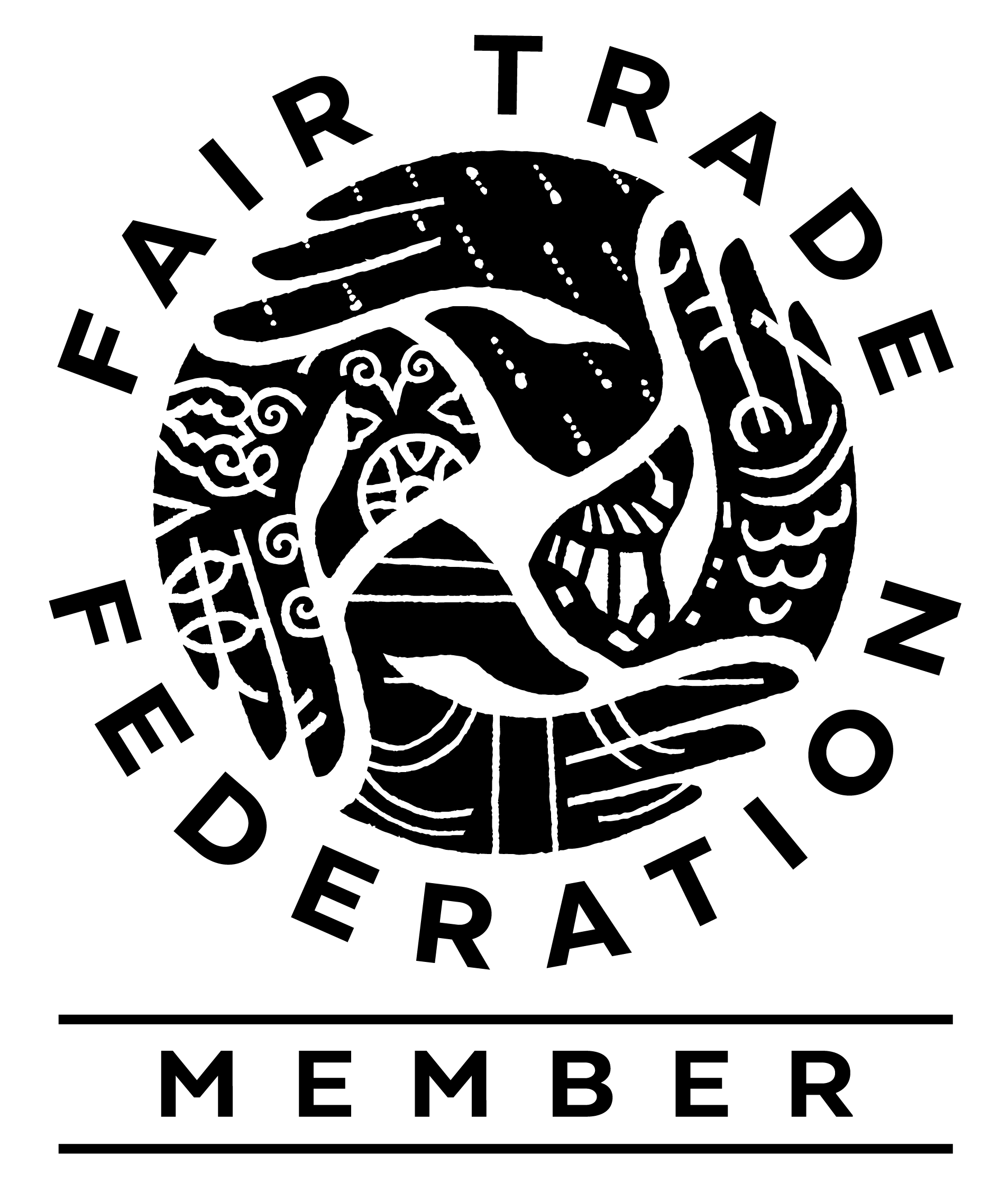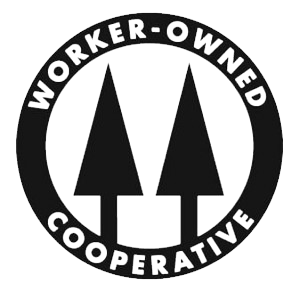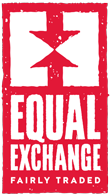
As the Coordinator of Cross-cultural Immersions at the University of Dayton, I am always looking for new ways to help make our BreakOut and Immersion trips, domestically and abroad, more affordable. We have so many students who wish to spend time on their breaks working and learning in a new culture, community, and or country. We offer many opportunities to do so. But many students find the price tag attached to these experiences to be much too high. What is the answer?
One answer is to find fundraising opportunities for students to lower the cost of their trip. At the same time, your general run-of-the-mill fundraisers will seek out the cheapest items to sell, without paying mind to how, where, or by whom they are produced. Would it not be completely counter-intuitive to use products created through the exploitation of workers in, let’s say the Dominican Republic, to raise money to travel and be in “solidarity” with people in El Salvador? I would say so!
Enter Equal Exchange fundraising. How about using a system that ensures fair wages and dignity for those in the Dominican Republic, helps raise money for the student who wishes to travel, and allows that student to visit El Salvador, learn about its history and grow deeper in an understanding of human connectedness around the world? Sounds like a win, win, win.
Oh wait, one more win: most Equal Exchange products are grown organically and pay attention to how we treat this fragile and blessed planet of ours.
I am fortunate that I work at a university that is growing in its understanding of the importance of Fair Trade and walking gently on the earth. There continues to be room for improvement and education, which is another reason why Equal Exchange is such a fabulous partner.
In addition to providing incredibly delicious and quality products in their fundraisers, which are Fair Trade and environmentally friendly, EE offers a vast array of educational materials to help make the connections, for both the students selling the items and those purchasing them.
It doesn’t take long to convince me that fundraising through Equal Exchange is the right choice. But how do I convince our students?
Over the years, our fundraising efforts have morphed in a variety of ways. We used to participate in large group fundraisers, pooling the money and splitting it amongst all the participants. Although this is a good lesson in group bonding, collective resources and common good, I found, over time, that the students who really needed to raise money for their trips were doing most of the work, but the money raised was portioned out to all.
 Something needed to change, so we moved to a more individual-styled fundraising model. Although we were already using the Equal Exchange fundraiser for the group, switching to students raising money individually was super easy. Each order is tracked individually and the percentage of money raised is indicated on the master order form. It really is a piece of cake (made with delicious Fair Trade cocoa)!
Something needed to change, so we moved to a more individual-styled fundraising model. Although we were already using the Equal Exchange fundraiser for the group, switching to students raising money individually was super easy. Each order is tracked individually and the percentage of money raised is indicated on the master order form. It really is a piece of cake (made with delicious Fair Trade cocoa)!
Now, I have many very motivated sellers, who are able to raise money to help alleviate some of the cost of their BreakOut or immersion experience. My office is a part of our Campus Ministry at a Catholic and Marianist University. It is in our mission to educate other on issues of social justice and equality. We are strongly guided by the pillars of Catholic Social Teaching, calling for a care for all of creation, solidarity with all peoples of the planet, and a preferential option for the poor, among others.
Photos taken by Julie Benedetto during a Cross-cultural Immersion trip with Christians for Peace in El Salvador (CRISPAZ) in January 2017.
For the past two years, we have had the pleasure of partnering with Mattole Valley Charter School at the Mt. Shasta Learning Center in California for their Fair Trade fundraiser. With just two fundraisers, they raised almost $5,500 which was used towards classroom art supplies and field trips throughout the year, including trips to a pumpkin patch, an indoor climbing studio, Sundial Bridge at Turtle Bay Exploration Park, and much more.
We wanted to hear more about this school’s impressive and inspiring fundraising efforts, so we spoke with Claudia Carpenter, the fundraising organizer, about her school and the Equal Exchange fundraiser.
“For the past two years, I have truly enjoyed supporting our school program with an Equal Exchange fundraiser! Our students, parents, and teachers especially like participating in a fundraiser where they can sell products that are socially and environmentally sustainable in support of small farmers around the world. Everything about the fundraiser lends itself to education. We can study geography, commerce, fair trade, the origin of food products. There are so many related topics that can lead to interesting educational discussions and activities for all ages.
We have a very small group of only 30 students in our elementary program from kindergarten to 8th grade. Yet, with Equal Exchange, the students have been able to raise enough money for all our field trips for the entire year. Our students are able to enjoy programs and activities such as live theater performances, nordic skiing, ice skating, science and art projects, and camping trips. The kids like the chocolate too!”
Congratulations to Mattole Valley Charter School on their successful fundraising efforts!! Below are some photos of the students at Mattole Valley Charter School enjoying their field trips!
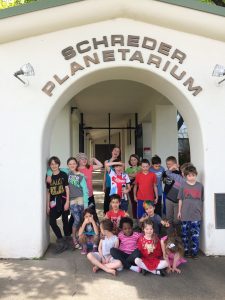
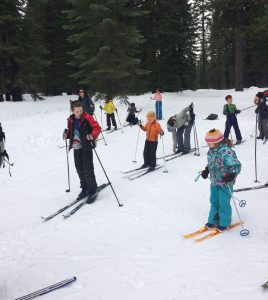
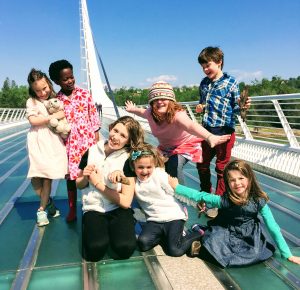
If you’re interested in running your own Equal Exchange catalog fundraiser, you can find out more information and sign-up on our website.
Tasting coffee is a full sensory experience, from the moment you grind your freshly roasted coffee through to your last sip. This guide (written by our Coffee Quality Control Manager, Beth Ann Caspersen) will show you how to hold your own coffee tasting to celebrate the hard work of the coffee producers who grow these special beans.
What do you need?
Brewing your coffee is quick and easy! All you need is the coffee of your choice, coffee grinder, fresh filtered water, your favorite coffee brewing device and ceramic mugs to savor the delicious flavor. (Look to our brewing guide for tips and advice on preparing the perfect cup of coffee).
For the optimal coffee tasting experience, use ceramic mugs or thick glass cups with a wide mouth. This will allow the participants to enjoy the aroma of the coffee and their experience with the coffee. The natural elements you find in a cup of coffee can be best experienced if they are unadulterated, too — in other words, try the coffee black first and follow our lead on your tasting experience (but feel free to add milk and sugar at the end of the tasting)!
Step 1: Savor the Aroma
Once you have brewed your coffee, fill each person’s cup halfway and pass out the mugs. We recommend using ceramic mugs to enhance your experience, and filling the mug halfway will allow the coffee to cool down quickly and provide everyone with ample space to fully appreciate the aroma.
Now encourage everyone to place their hands around their mug and inhale all that the coffee has to offer. Take a moment to think about the aromas you are experiencing. What do you smell? Does the aroma remind you of something? A different food or drink?
Step 2: Take a Sip
As the coffee begins to cool, continue to smell it and take a sip. Now ask the participants about their experience. What does the coffee taste like now? What are some of the flavors you are enjoying?
Before you reveal the flavor notes we’ve noticed, explore the many characteristics the coffee has to offer by using the Specialty Coffee Association coffee taster’s flavor wheel to help guide your conversation. It’s fun and really helps everyone to learn about the complex world of coffee.
Step 3: Reveal the Flavors
After you taste the coffee for a few minutes and guide the conversation, reveal the flavor notes we find in the coffee, which are listed on the online product page. How was your tasting experience similar or different?
Explore our full line of coffees and taste them all! Comment below to share your coffee tasting experience.
This summer, the Equal Exchange interfaith team traveled around the country to events celebrating our faith-based partnerships. We were excited to meet and talk with so many of our supporters and hear about the work that they are doing in their communities. Meet some of our extended Equal Exchange family and read their stories below!

Wherever Marion Bell travels, including to the Unitarian Universalist General Assembly in New Orleans, she brings the following with her in a special bag: Equal Exchange French Roast coffee freshly ground the night before she leaves, a pourover brewer and filters, a small electric water kettle, and a porcelain coffee mug. She wants to drink socially-just coffee wherever she goes and clearly takes it seriously!
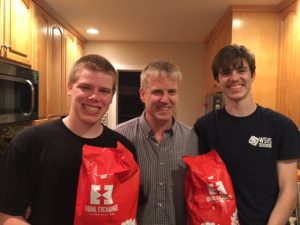
Rev. Tim Bobbitt of First Christian Church in Alexandria, VA shared this great photo with us at the Disciples of Christ General Assembly in Indianapolis, Indiana. For Father’s Day, his two sons knew exactly what he wanted and gifted him bulk bags of Equal Exchange coffee beans.

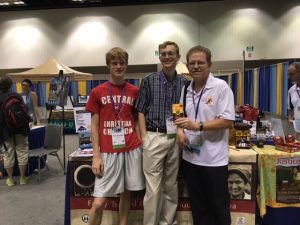
At the Disciples of Christ General Assembly, Rev. Robert Bushey of Central Christian Church in Bourbonnais, IL shared photos of his incredible Fair Trade parade float with giant Equal Exchange chocolate bars! They sell Equal Exchange products at their local farmer’s market to encourage folks to support small farmers globally, too.
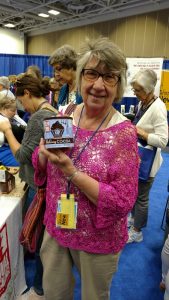
In Minneapolis, MN at the Women of the ELCA Triennial, Alice Carlson from Advent ELCA in Middleboro, MA told us that our baking cocoa is the best she’s ever tried!
“How does it go from cacao to cocoa?”
Darlene Brewer & Justin Schwartz of Wyndholme Christian Church in Halifax, Nova Scotia loved our dried cacao pod and shared an impromptu song and dance with us at the Week of Compassion booth at the Disciples of Christ General Assembly.
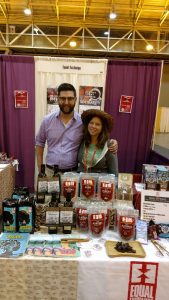
Ariel Aaronson-Eves and Rev. Sam Teitel ran into each other at the UU General Assembly in New Orleans after not seeing one another for years. They posed in front of the Equal Exchange booth for old time’s sake.
Ariel and Sam were two of the first wave of baristas who worked at the Equal Exchange cafe in Boston 9 years ago!
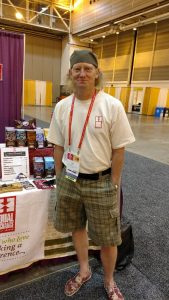
Rev. David Hutchinson (in a vintage Equal Exchange tee shirt) is the pastor at the Unitarian Universalist Church of Houlton, ME.
They’ve served Equal Exchange coffee at the church’s “Cup Cafe” for six years. It’s also a fizz bar with italian sodas and a music venue. Visit them off of the last Maine exit on I-95N to stop by their cafe or stay at their Airbnb!
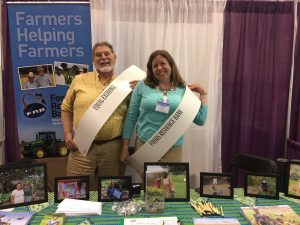
Mr. Equal Exchange, Peter Buck, shared a table with Rachel Brink of Foods Resource Bank at the Church of the Brethren Conference in Grand Rapids, MI.

In New Orleans at the Unitarian Universalist General Assembly, we met John Adrian from United Church in Staten Island, NY. John told us that he never liked dark chocolate until he had an Equal Exchange bar! Equal Exchange: converting milk chocolate lovers since 2001.
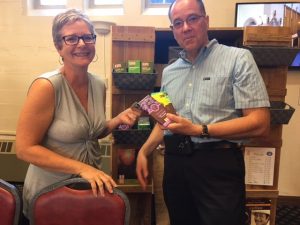
We visited Jenni Heimach at Irvington Presbyterian Church, one of our top church customers in Indiana and saw her in action selling and sampling Equal Exchange products after services. Profits from their weekly sales pay for their Fair Trade, organic coffee hour.
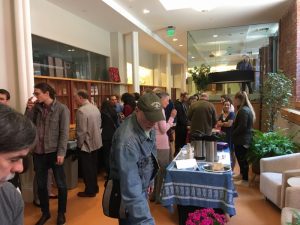
We hosted an Equal Exchange coffee tasting at St. Cecilia’s Catholic Church right in our own backyard in Boston.
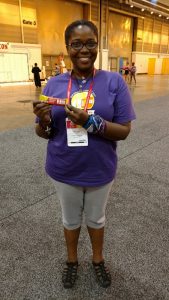
We’re always happy to help fuel conference-goers! Nathalie Bigord of UU Congregation of Gwinnett said that munching on our wholesome Fruit and Nut Bars helped her survive the 6 day long Unitarian Universalist General Assembly in New Orleans.
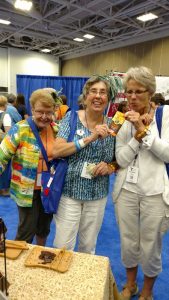
Chocolate lovers unite! At the Women of the ELCA Triennial we met long-time Fair Trade chocolate fans Karen Edwards and Kathleen Sumrall of Trinity Church in Sparta, WI and Gretchen Jensen of Our Redeemer Lutheran Church in LaCrosse, WI.
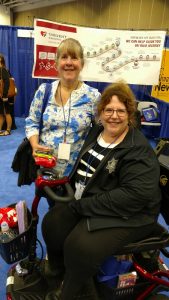
Meet Jann McIsinr and Dawn Hassle of Milwaukee Lutheran Church, pictured at the Women of the ELCA Triennial in MN. Jann told us, “The coffee that you served at the New Attendees Breakfast was the best coffee that I’ve had the whole time here.” Thank you, Jann, we love hearing that!
To all of our partners and supporters, we thank you for the work that you do in your congregations and communities to promote economic justice for small scale farmers. We loved getting to know you better and hope to see you soon!
When you’re making coffee, what’s your go-to roast level? Do you prefer the bright, milder flavor of a Guatemala Medium, or the sweet smokiness of Love Buzz? Have you ever wondered what really makes them different? Here we’ll break down the differences between coffee roasts, from light to dark! Watch the video below to hear an overview from Mike Mowry, our Coffee Quality Coordinator, then read on for more details.
First, it’s important to understand what a “coffee roast level” really means. When we roast coffee, we take raw, mostly flavorless and odorless coffee beans and heat them to bring out different characteristics. The length of time spent roasting the beans determines its roast level, which begins to determine how the coffee ultimately tastes. Different roast levels and methods bring out different characteristics in coffee beans depending on their origin, varietal and seasonality, so every roaster must use their creativity and judgment to bring out the best in every distinct batch.
Coffee roast levels can be judged at a glance by the color of the beans, from light to very dark brown. As you might expect, the darker the beans are, the longer they have been roasted. While there is a wide range of roasts that are possible, at Equal Exchange we offer coffees at the Medium, Vienna, Full City and French roast levels.
Medium: Medium roast coffee is medium brown in color with a non-oily surface. These roasts tend to highlight well the inherent characteristics of the beans, having not yet been overtaken by flavors of the roasting process itself.
Full City: Full City roast coffees begin to take on more of a caramel flavor, with an underlying complexity of taste from the roasting process. We find that the most desirable characteristics of a particular country or region are exemplified in our Full City roast, with the beans at their most complex and most flavorful.
Vienna: Roasted even darker, the Vienna roast coffees start to show light surface oils brought out by the roasting process, with the beginning of dark chocolate flavors and a smoky aroma for a smooth and rich cup.
French: French roast coffee gets into really dark chocolaty and caramelized sugar flavors, with the beans roasted for a longer period of time to bring out a deep richness and intensity of flavor. The beans are a dark brown, with visible oils on the surface.
So what’s the best coffee roast of all? The one you like the most! Coffee is all about preference, so we encourage you to try as many roasts as you can to find your perfect cup.
Earlier this summer, Green Coffee Buyer Carly Kadlec traveled to Chiapas, Mexico to visit our farmer partners at Comon Yaj Noptic Cooperative. Here she shares her thoughts on these farmers’ inspiring efforts to preserve local biodiversity:
Back in 2013, during my first visit to our partners at Comon Yaj Noptic (CYN) in Chiapas, Mexico, I learned about an incredibly interesting community-led effort to monitor biodiversity in and around members’ coffee farms. CYN’s farmers live in and around the buffer zone of El Triunfo Biosphere Reserve. El Triunfo is an incredibly important and biodiverse mix of tropical and cloud forest in the Sierra Madre de Chiapas mountain range. After a massive hurricane impacted the region in the mid-2000s, conservation non-profits in the area looked for community partners to participate in monitoring projects to study the impact of climate change on this ecologically significant biologic corridor. Luckily, the non-profit coordinating the project found CYN and engaged the farmers in the design and implementation of this project. The goal of the project was to monitor migratory bird species over the course of several years and track the impact that increasingly significant climate events have on this ecosystem. Farmer members of CYN were trained by wildlife biologists on how to perform bird counts and learned the scientific names of local and migratory species. The farmer-biologists then completed their species monitoring every month and reported their data back to a project coordinator at the cooperative.
This is a unique project for a couple of reasons. One of the common weaknesses of biodiversity conservation efforts is the lack of local input in project design and execution. In this project, the farmers directly contributed to the data collected, received compensation for their work as field monitors, and increased their knowledge about international birding tourism. Comon Yaj Noptic now offers tourism packages for bird-watching in El Triunfo Biosphere Reserve and has attracted birders and photographers from around the world. I love traveling to Comon Yaj Noptic because I get to learn directly from farmers about the incredible biodiversity of the region as well as see an example of how community-centered conservation efforts can be successful scientific studies and add value to the local economy.
We’re proud to partner with this co-op and support their environmental stewardship efforts. In honor of this work, we roast Organic Bird of Paradise, a blend which includes beans from the coffee farms bordering these spectacular protected lands.
It’s summertime, and that can only mean one thing for coffee lovers: cold brew. While cold brew coffee is all the rage at cafes lately, it’s surprisingly easy to make yourself at home. No barista required.
One of our favorite ways to make cold brew is by using the Toddy method, which produces a reliably rich and smooth brew to cool off with. You can find our step-by-step Toddy brewing instructions here.
No Toddy? No problem. You can make cold brew coffee with just a few simple household items. Here are two ways you can do it.
To start:
· There is no “wrong” way to do this, as coffee generally comes down to your personal preferences.
· There is a “best” way to make cold brew coffee that highlights the flavor notes and most delicious characteristics of the coffee
· There is such a thing as “bad water,” so make sure you are using water that tastes good and is free of odors. It will affect the flavor of the cold brew more than if it were brewed hot. We suggest using filtered tap or bottled water.
· We will be using a 1:4 coffee to water ratio. This will produce a concentrate that you can dilute as desired according to how strong you like it.
What you’ll need:
-64 oz. mason jar with a two piece lid (a solid lid is fine if you’re using the cheesecloth method)
-1 liter (1,000 grams) of cool, clean water
-.5 lb (227 grams) finely ground coffee
-A filter: cheesecloth for method #1, or standard coffee filter or cheesecloth for method #2
The process:
1. Measure out your water into a clean container.
2. Measure out and then finely grind your coffee into a separate clean container.
3. Put your ground coffee onto the cheese cloth, fold up the edges and tie off the end. Or, put your ground coffee directly into the mason jar.
Method #1:
4. Slowly pour your water into the mason jar.
5. Let the coffee steep for 12 hours.
6. Remove the cheesecloth bundle from the concentrate, letting the coffee drain completely into the mason jar before discarding.
Method #2:
4. Slowly pour your water into the mason jar in a steady circular motion.
5. Gently submerge all of the coffee grounds with a butter knife.
6. Let the coffee steep for 12 hours.
7. Remove the center lid piece from the mason jar and use the outer ring to secure the coffee filter or cheesecloth to the top of the mason jar mouth.
8. Gently invert the mason jar over a clean glass container that will hold your concentrate.
9. Be patient, this may take a few minutes – let drain completely.
You’re almost there! Your finished coffee concentrate can now be diluted with water at a 1:1 ratio. More or less water can be used to achieve the desired taste. Store your cold brew coffee concentrate in a glass container and keep refrigerated. The concentrate will keep for a week (but if you’re anything like us, it’ll be gone much faster than that!).
Explore our organic, fairly traded coffees on our web store!
Sugar.
It seems like such a simple thing. The essential ingredient we so often buy in the U.S. that ends up in something delicious that makes us happy – a morning cup of coffee, a celebratory cake, or a pan of brownies.
The reality is, sugar is far from simple. We could dedicate a lot of space to the disconnect between small-scale farmers and the market due to the control of export by large sugar mills that have all the power at source. Or, we could highlight the continued labor abuses on sugarcane plantations as graphically detailed 10 years ago in the documentary, “The Price of Sugar,” which depicts the plight of Haitians who have been lured into a form of indentured servitude on sugar plantations across the border in the Dominican Republic.
We aim to cover some of this in future blog posts, but today we want to look at something that we see so blatantly on a yearly basis when we work to import sugar from small-scale farmers into the U.S.: the manner in which corporate sugar barons have manipulated trade policy to disproportionately benefit themselves at the expense of smaller producers, including thousands of peasant farmers around the world. U.S. shoppers who might be inclined to support small-scale farmers have little choice and pay far more than they should due to a complicated system of price supports and duties. So let’s dig in a bit more.
The U.S. sugar industry has long used money and political clout to protect and grow the industry, as exemplified by the discovery last year that the sugar industry paid scientists in the 1960s to place the blame for heart disease on saturated fats instead of sugar, influencing decades of U.S. health policy.
Today, the sugar industry focuses money and resources on political lobbying to prop up domestic sugar prices and control sugar imports from cheaper sources. In large part due to the outsized donations and influence from the sugar industry, the U.S. Department of Agriculture enacts a complicated sugar policy with price supports and quota systems that elevate U.S. sugar prices above world market prices – sometimes two-to-three times higher than the world market price.
On the surface, this policy appears sweet and maybe it’s not so bad for our health if sugar is not dirt cheap. Supporting U.S. production keeps cash, investments, and resources domestic, and Equal Exchange is are all for that when it helps local economies and local communities. Digging a little deeper, however, the effects may have a bitter outcome.
These protected American producers are not necessarily small-scale operations and often the benefits land in the hands of a few who have disproportionately high influence over the industry. And, American consumers end up paying higher prices for sugar and sugar-containing products at the grocery store.
Current policies can be traced back to a relatively small number of key actors. Arguably, the most significant actors are the Fanjuls. The Fanjul family co-owns the world’s largest sugar refinery here in the United States and are significant names behind big companies like Florida Crystals and Domino. In the 1980s, the Fanjul sugar barons outgrew Florida and expanded production to the Dominican Republic. Today their Dominican company, Central Romana, is the largest private landowner and employer in the D.R. This company has been fined numerous times for labor law violations and mistreatment of their workers, many of whom are Haitian and Jamaican immigrants.
To protect their interests, the Fanjuls are major donors to lobbying groups and political candidates. Conveniently, their political ties are bipartisan: one brother is a Democrat and the other is a Republican. Before the 2016 presidential election, they hosted benefit dinners for candidates Hilary Clinton and Donald Trump. Historically, the Fanjuls have even hosted presidents at their 7,000-acre Casa de Campo resort in the D.R. Some of the policies they influenced include federal health recommendations of sugar consumption, higher volume trade quotas with the Dominican Republic, and lowering environmental regulations in the Everglades. According to one environmental lawyer in a 2016 issue of The New Yorker, “Given the choice between buying a tractor and hiring a lobbyist, the sugar industry is going to hire a lobbyist every time.” Because of the Fanjuls’ dominant presence, other sugarcane growers in the United States and around the world struggle to compete.
These trade policies impact organic and small-scale farmers in a big way. Equal Exchange’s producer partner for sugar, Manduvira co-op in Paraguay, emerged as an alternative to conventional sugarcane plantations, supporting over 1,000 small-scale producers to grow organic sugarcane. Like its neighbor Brazil, Paraguay also suffers from deforestation in its Atlantic rainforest due to rising agricultural pressures. Unlike its neighbor Brazil, Paraguay has a higher proportion of its population living in rural areas (40 percent of rural residents in Paraguay compared to 14 percent in Brazil). This results in a higher proportion of Paraguayans who are still dependent on agriculture, such as sugarcane, as their main source of income and subsistence.
Sugarcane in Paraguay has become yet another industry that denies access to the small producer. Major sugar refineries in Paraguay own their fields and only purchase from outside producers after all their company sugarcane is processed, and only if there is a high enough demand – often long after the small farmer’s ideal harvest cycle.
In 1995, members of Manduvira worked together to establish Fair Trade certification for sugarcane and sell their product cooperatively. They have been so successful that today, Manduvira built and manages its own mill for its own sugarcane production, making it the first and only organic sugar mill owned by small-scale farmers! Their accomplishment serves as an example, not only for Paraguay, but also for the international cooperative community, and is one way to combat global sugar giants. Equal Exchange is committed to our partnership with Manduvira, and we work diligently within the context of biased policies and costly tariffs to import their sugar.
For the small-scale farmers that have put their heart and soul into Manduvira, to access the U.S. market Equal Exchange has to work with Manduvira to navigate the U.S. sugar quota system. Organic sugar is considered a specialty sugar and there are five specialty sugar windows in which it can be imported each year.
Manduvira’s sugar needs to arrive at a U.S. port, in this case it’s New York, during a sugar window so it can be cleared. To get it to New York on time, it needs to get on a river barge from Asuncion, the capital of Paraguay, to make its way to the ocean where it will be loaded on an ocean vessel bound for New York from Montevideo, Uruguay, or Buenos Aires, Argentina. This trip can take 40-60 days depending on how smoothly all the pieces line up, so to have the sugar land during the sugar window is often a bit of a miracle given all the external factors.
If the product arrives on time, Manduvira sugar is then competing with many other companies trying to access the window and there is a limited amount of sugar allowed with each window. After all of that effort, the sugar may end up entering the U.S. at a high duty rate or only a percentage of the shipment will access the low duty rate if the quota is prorated amongst all the people accessing the window. When this sugar doesn’t get in at a low duty rate, which has certainly happened, it is pretty much impossible for Manduvira’s sugar to compete and be viable in the U.S. market.
While getting a little in the weeds on the importing side of business, this demonstrates the real systemic challenges small-scale sugar farmers face, whether that’s in Paraguay or the United States. Power is concentrated in the hands of those with big money, keeping those who are marginalized by the system voiceless and poor. Despite the unlevel playing field, we are inspired by the members of Manduvira co-op and hope to see more stories like theirs.
Written by Dary Goodrich & Laura Bechard, Chocolate Team
Thank you for signing up for our newsletter!
Just because you’ve decided to rough it for the weekend doesn’t mean that you have to go without excellent coffee. There are plenty of ways to brew a cup of coffee in the woods, or on the trail, without sacrificing quality or getting weighed down by bulky brewing contraptions.
First, you’ll need to bring coffee. If weight is an issue (especially if you’re backpacking) make sure you bring only as much as you need and weigh out your coffee at home.
The next question is whether or not you need to pre-grind your coffee. There are plenty of pocket mills and hand grinders on the market. Some of them fairly expensive and some of them very affordable. I personally always bring a hand grinder. I love brewing with freshly-ground coffee, and hand grinders don’t take up much space or weight. If you don’t want to grind in the wilderness, then grinding your coffee at home is the best solution. Just make sure you know how you’re going to brew so that you can correctly weigh out and grind your coffee according to your desired brew method.
You’ll also need to bring a container to heat your water in. There are plenty of ways to heat water while camping, just make sure you can keep ash and debris out of the water if you’re using a campfire. Make sure that the container has a spout, even if it’s very small (let’s be honest, you’re probably not going to bring a gooseneck kettle on a camping trip, but it’s not unheard of) so that you aren’t pouring hot water directly out of a large-mouthed pot which could potentially be dangerous.
Most importantly, you’ll need to decide how you want to brew your coffee. There are many ways to brew coffee in the woods, although some may be quicker and easier than others. It’s up to you! Here are some of the ways we do it:
Aeropress. The small, lightweight and compact the Aeropress is very high up on the favorites list for campers. It’s done in about two minutes and cleanup is a breeze. Just make sure you bring your favorite sturdy cup to press your coffee into, and don’t forget filters (the reusable stainless steel filter is perfect for use in the great outdoors). We think it’s perfect for backpacking and camping.
French Press. For those who like a little taste of home in the wilderness, the French press is another good choice. Cleanup is a little more involved than the Aeropress, but still easy to handle. It’s easy to achieve a smooth, balanced cup without all the gadgets in your kitchen. It’s great for camping or car camping, but may not be so great for the trail, especially if you have a glass model!
Pourover. Who says you can’t have a café in the woods? Although it requires a little more time and attention, the pourover is a great method for brewing outside. Just don’t forget your filters! For this brewing method, you’ll need a more gentle stream of water than you would need for the Aeropress and the French press, so take that into consideration when packing your water vessel. (REI sells a great camping pourover that’s collapsible; check it out HERE, especially if you’re backpacking — it’s a huge space saver!) This is good for camping, car camping and backpacking.
Percolator. Want an easy way to brew? You can always just set a percolator over the fire. Just set it and forget it! Ok, not for too long. All you’ll need for this is the percolator itself: no filters or separate water vessel, making it a convenient, durable all-in-one brewer. Percolators are an iconic camping brew method. Although not as popular in the specialty coffee scene, they get the job done. Don’t forget your beef jerky and harmonica.
Enjoy your caffeinated trip to the outdoors! What’s your favorite way to brew coffee in the wild? Let us know in the comments.
What does democracy mean to you? Do you believe that you are an active citizen in a democracy? How about in your food system?
To me, democracy goes beyond showing up for one day to vote for a presidential candidate, sharing a politically charged status on social media, or filling out your e-mail to sign another online petition. Democracy takes effort, commitment, collective responsibility, and passion. It’s not always easy, certainly not simple, but if we as a people are committed to a better world, it cannot begin and end on Election Day.
Danielle Robidoux, left, at an Action Forum event in Boston.
Likewise, participating in the food system cannot begin and end with a purchase. To get closer to a more transparent, just, and safe food system, we need to be fully engaged, not passive consumers. For a long time the jargon of conscious consumerism has been “vote with your dollar.” It is not enough. Now more than ever is the time to not only raise your dollar but to put your voice behind it.
So, how can we become real participants in a democratic food system and make a positive impact to build the world, and the food system, that we want to see? I believe we need to build communities and meaningful connections; there is power in organization, in solidarity, and in numbers. A successful democratic food system cannot be built without an active populace, without active citizen-consumers.
Equal Exchange has always had people at its center. Coffee, chocolate, tea, mango, cashews—these are just mediums by which Equal Exchange can show the world that ethical supply chains are viable—that there is more than one way to do business. The radicalism lies within the Equal Exchange model: a supply chain that is characteristic of true democracy, cooperative learning, transparency, a respect for our planet and its people.
For the past 31 years Equal Exchange has worked on supporting our producer partners abroad and standing alongside them in their struggles, on a journey to build a more sustainable system. We have done this with a commitment to our internal democracy, too, as a worker co-op. As we reflect on the change we have built and the complexities that now define our world, we realized there is a missing piece: you. And so we launched the Action Forum late last year to provide an organizing mechanism.
On June 9, over 100 individuals got together to have a conversation, when Equal Exchange hosted our first-ever People’s Food System Summit. This event brought together all parts of our supply chain: Equal Exchange worker-owners, producer partners, and Action Forum members. The gathering was a milestone for our work to build the Action Forum and to have conversations around food justice. As a community we began to grapple with many food industry dilemmas and how we could imagine building a better food system, together.
The first day of the summit we delved deeply into the corporate consolidation that characterizes our food system, successes and failures of the Fair Trade movement, climate change from the perspective of our producer partners, and alternative buying models that opt out of the corporate system. The second day was spent building the foundation of our community and culture of democracy among members of the Action Forum. We debated and voted on proposals regarding the Action Forum’s path forward, broke out into small groups to discuss how we can build tools and grow our community, and made a commitment to stay connected to continue this work, together.
Our current economic and political climate is not conducive for alternative food systems. The food industry encourages us to think as individual shoppers rather than as a collective. The key to building effective, long-lasting change is to build strong communities centered around people. The Equal Exchange Action Forum is striving to facilitate this work, through connection, democracy, transparency, authenticity, and putting people over profit.
Join us, and add your voice. Learn more here.

